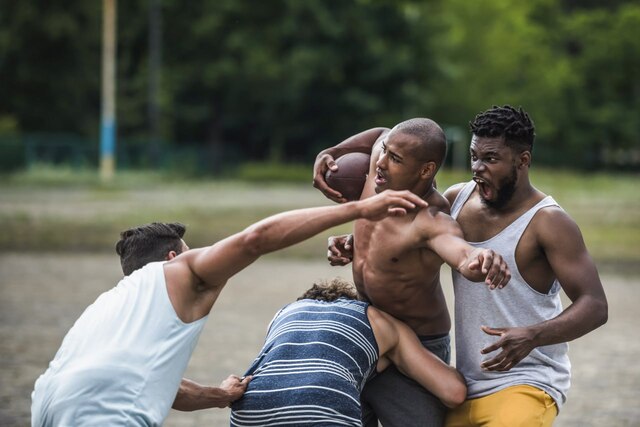As U.S. sports leagues consider reopening games in the face of the ongoing COVID-19 pandemic, the question arises: What conditions would necessitate a reopening? Conversations with journalists and colleagues helped shed light on this critical question. Let’s dive headfirst into examining this question and learn about opinions on the matter.
First, Consult Your Values
 An exemplary model is the Women’s Flat Track Derby Association (WFTDA), known for roller derby, which adheres to the principle of “Life Before Laces.” They prioritize a low-risk approach, whereby a single case of COVID-19 infection among league members means a cessation of activities and resumption of classes for at least two weeks, underscoring their commitment to participant safety.
An exemplary model is the Women’s Flat Track Derby Association (WFTDA), known for roller derby, which adheres to the principle of “Life Before Laces.” They prioritize a low-risk approach, whereby a single case of COVID-19 infection among league members means a cessation of activities and resumption of classes for at least two weeks, underscoring their commitment to participant safety.
However, larger, resource-rich leagues with frequent testing could justify a higher threshold before discontinuing activities, given the inevitable occurrence of cases due to the widespread spread of the virus across the country. Setting the threshold at one case could result in immediate suspension, making it futile for the league to resume operations.
Evaluating the Threshold
The challenge lies in determining what constitutes a high-risk environment versus an outbreak:
- High-risk Environment. This is assessed by comparing the risks players and staff face by participating in the league versus not. Regular testing is crucial here. Initial tests can indicate infections acquired from community interactions. For example, early testing in the NHL and NBA showed about 5% positivity among players, reflecting community-level infections. A league doesn’t add extra risk if the infection rate among participants is below the community infection rates.
- Outbreak Indicators. Rapid succession of cases, especially 3-4 on the same team, would suggest uncontained spread, necessitating immediate team or league-wide shutdowns for quarantine measures.
Leagues must also consider their impact on local healthcare resources and testing capacity. For instance, the NBA’s bubble plan in Orlando faces challenges with local case spikes. If local healthcare is overwhelmed or if testing resources are strained, continuing the league could draw essential resources away from the community, which would be ethically untenable.
Given the complexity of these decisions, establishing an independent oversight body similar to a Data Safety and Monitoring Board used in clinical trials could provide an unbiased assessment of safety conditions. This board would have the authority to halt league operations based on health data, independent of financial or business pressures that may affect league commissioners.
Safety First
Leagues should operate under strict safety thresholds to prevent unnecessary risks to players, staff, and the community. An independent board could help ensure that health considerations remain paramount, avoiding conflicts of interest that may arise from financial incentives. This approach not only protects participants but also maintains the integrity and public trust in these sports institutions.